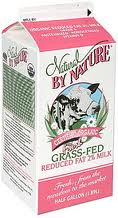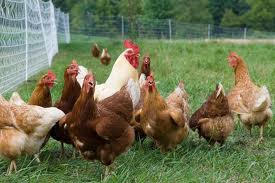After Obama’s “bad spilled milk joke,” which provoked
groaned utterances and a few chuckles, I started thinking about milk. Milk was
on my mind. Milk does my body good, or did when I drank it, or did it? Milk.
Milk. Milky white milk. Did people at one time, you know, that time during which many of our hackneyed, clichéd, and
otherwise overused-to-the-point-of-lost-meaning phrases were created, really
cry because they spilled a glass of milk? Were the tears for Bessie’s moo juice
produced out in yonder bucolic meadow—the place we (former or ashamed) mainstreamers
can at times barely imagine? Gasp, milk doesn’t come from the dairy section of
the national chain grocer, from the gloved hand behind the refrigerated racks
next to the “free range” eggs?

Better question: why do so many of our shareholders also
elect a milk share—be it skim, 2%, or whole? Our milk, like the $10,000 efforts
of said Dairy farmers to contain spillage two score years ago, is worth crying
over. Har. Har. Har. Seriously though seriously, the milk used for our milk
shares is amazing, local, and certified organic. The dairy, Natural by Nature,
is family-owned in nearby (just over an hour’s drive) West Grove, Pennsylvania.
First, where do other milks come from—the milks next to the
“free range” eggs at my local, national, multinational conglomerate grocery
chain store with clothes, shoes, music, garden (Round Up), automotive, and
disappointing art/crafts sections come from? Conventional dairy farms and
concentrated animal feeding operations (CAFOs). These types of places look very
different to us and feel very different to the cows than Natural by Nature. The
goals of these farms and factories, respectively, are many times to increase
milk production while decreasing herd size. Conventional dairy cows have
significantly shorter life spans of about three to four years due to the stress
of lactating constantly as well as disease and other ailments like lameness and
mastitis. Cows on factory farms give birth once a year after artificial
insemination, and two to three months after calving, she is once again bred to
continue her lactation.
After reading and reading and feeling repulsed, I wanted to
know more about the milk we offer. Some shareholders have ordered up to six
milk shares per season. That’s three gallons of milk per week, or in other
words, a lot for a vegan mind to wrap around. Natural by Nature does just that:
follows nature’s lead on managing the dairy herd.

Ned MacArthur had enough of the low—frustratingly so—milk prices
and absence of a systemic way to sell organic milk. So he quit. For one year.
By 1994, Ned and his father, Norman, started Natural Dairy Products Corporation
(NDPC) which then started producing a line of milk and dairy products another
year later called Natural by Nature.
Despite the four digestive compartments within their stomach
region, which may seem to nod at a digestive system capable of digesting pretty
much everything and the kitchen sink, Natural by Nature asserts, “Cows are
meant to eat grass, not grain.” So cows eat grass, not grain. Is that why the
happy cows on television commercials are always in a green meadow? Confirmation:
“Pastured cows are healthier and less stressed. We strive to make fresh pasture
the main diet for our cows.”
Of course, “Being grass fed is ideal. When the grass is
lush and plentiful there is often no grain fed. In its best form, grass gives
the cow her caloric and mineral needs. Periods of saturation or drought can
compromise the feed value of the grass and necessitate the feeding for extra
protein (alfalfa or clover hay) and energy (grain & haylage).”
Mind you, today’s high is 21 degrees. Farenheit. Thus, the drastic temperatures
during the winter season pose a feeding challenge: “Most of our dairy herds are
fed grain in the winter.” The dairy estimates that only about 10-15% of their
herd’s dry matter intake (DMI) comes from winter grain rations to supplement
the nutrient deficient created by winter pastures.

According to the USDA’s dairy animal organic certification
standards, a minimum of 30% of a milking cow’s DMI must come from pasture
turnout. Aside from hay, pasture, and supplemental grain, dairy cows at Natural
by Nature are also fed haylage during the winter to feed their energy needs.
Haylage is simply first-cutting hay that’s been fermented to increase its sugar
content to provide energy.
Because we, humans and bovine friends alike, are what we
eat, incorporating grass-fed dairy products—if you eat animal products, that
is—into your diet means you’ll also be incorporating Beta Carotene, Vitamins A
and E, and Conjugated Linoleic Acid into your diet as well. These nutrients are
all naturally occurring in grass at higher levels than say the processed grain
in the diets of dairy cows at conventional farms or worse yet, concentrated
animal feeding operations (CAFOs).
In addition to Natural by Nature’s commendable commitment to
herd and human health and welfare, we are also proud to partner with them as
friends of the environment always looking for ways to sustain best green
practices. We don’t want to simply go green, we want to be, stay, live, and
embody green.
Natural by Nature makes us proud when they report:
·
Our Avondale facility electricity is 100% wind
power.
·
We do as much as we can to help support our
local organic farmers.
·
We recycle as much as possible.
·
We are careful to run our truck routes as
efficiently as possible.
·
We’ve done away with the plastic bags in our
retail store all together. Our customers bring in their own and we
recycle our used cardboard boxes by offering them to those who have forgotten
to bring a bag.
·
We also have reusable cloth bags for purchase in
our store.
Natural by Nature’s mission,

"To promote and support organic farming and the
sustainable use of our natural resources. To produce foods that benefit
consumers and farmers alike. To use the principles of grass based dairy
production as a means to improve the quality of our products, maximize the
health of our cows and protect our watersheds. To make a living for our
families based on these strongly held principles."
is an honorable one and strongly upheld in both
theory and practice. Cows are grazers and should do so. Milk is touted as good
for us and should be. Natural by Nature makes these things happen.
Don’t feel
ashamed when you cry if you spill this milk. It’s worth it.
Photo Credit: Natural by Nature website














 These places are designed so the eggs are on the opposite
end of the milk not because of categorical belonging but because there are many
other dairy somethings to need-upon-noticing between point eggs and point milk.
Note: high margin items are shelved at eye level. Notice we’ve only thus far
ranted on grocery stores, eggs, government-affiliated/funded (is there a
difference?) organizations, and consumers. What about the birds? This is for
the birds!
These places are designed so the eggs are on the opposite
end of the milk not because of categorical belonging but because there are many
other dairy somethings to need-upon-noticing between point eggs and point milk.
Note: high margin items are shelved at eye level. Notice we’ve only thus far
ranted on grocery stores, eggs, government-affiliated/funded (is there a
difference?) organizations, and consumers. What about the birds? This is for
the birds! 









